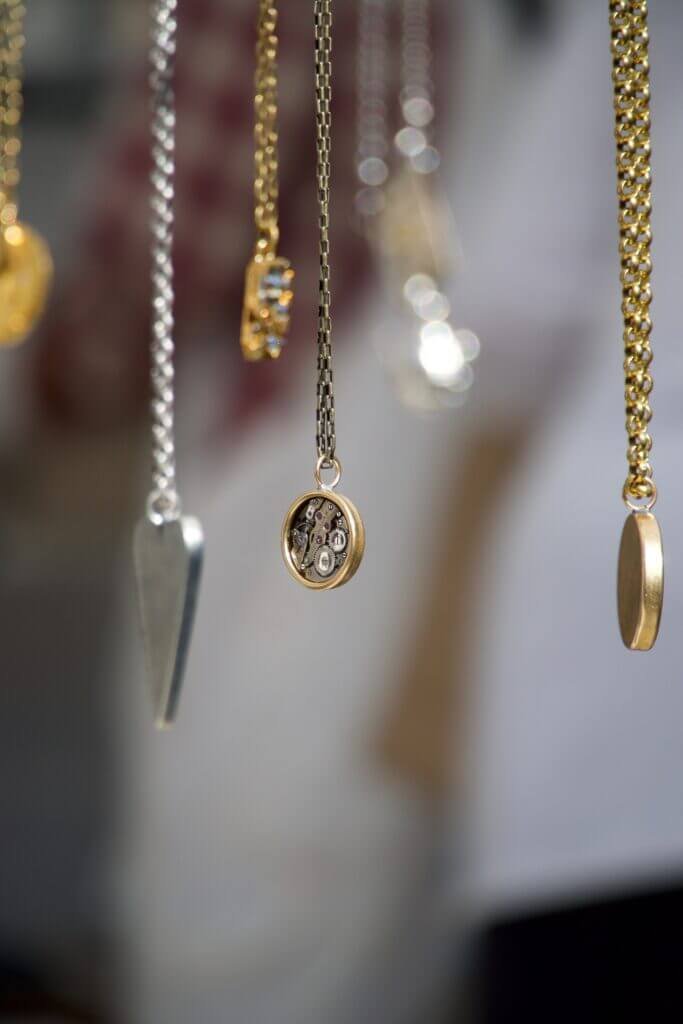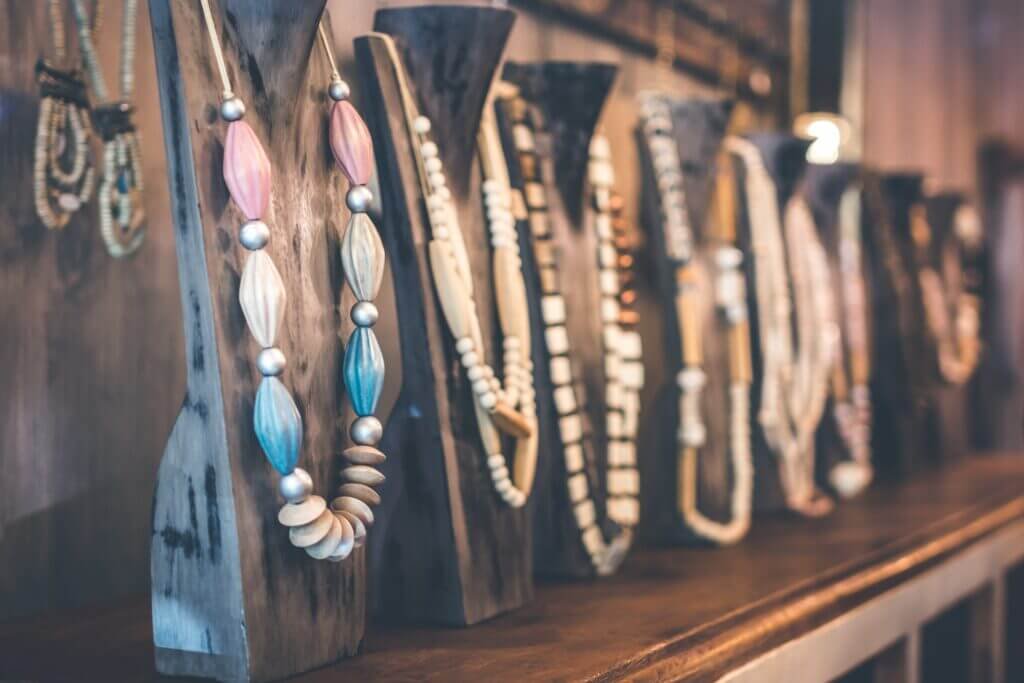Which Is The Most Commonly Used Method For Making Jewellery?
Which Is The Most Commonly Used Method For Making Jewellery?When it comes to the intricate art of jewellery making, the quest to discover the most commonly used method is one that has intrigued and fascinated craftsmen for centuries. From the ancient Egyptians who adorned themselves with gold and precious gemstones, to the modern artisans who deftly wield their tools in pursuit of beauty, the world of jewellery making holds a multitude of techniques. But amidst this wealth of options, which method reigns supreme? In this article, we will explore the fascinating world of jewellery making and shed light on the most commonly used method that has stood the test of time. Get ready to immerse yourself in the mesmerizing world of craftsmanship and discover the secrets behind the creation of exquisite jewellery.

1. Introduction
When it comes to creating jewelry, there are various methods and techniques that can be employed. Each method has its own unique characteristics and advantages, allowing for endless possibilities in designing and crafting exquisite pieces. In this article, we will explore some of the most commonly used methods for making jewelry, giving you a comprehensive overview of the techniques involved. Whether you are a jewelry enthusiast or someone looking to start a career in the jewelry industry, understanding these methods will provide you with a solid foundation to delve into the world of jewelry making.
2. Casting
Casting is a widely practiced technique in jewelry making that involves the creation of a metal piece through the use of molds. There are several casting methods, but three notable ones are the lost-wax casting, centrifugal casting, and sand casting.
2.1 Lost-Wax Casting
Lost-wax casting, also known as investment casting, is a technique that dates back thousands of years. It involves creating a wax model of the desired piece and encasing it in a heat-resistant material. The wax is then melted and drained, leaving a cavity that is filled with molten metal. Once the metal solidifies, the mold is broken, and the final piece is revealed. Lost-wax casting allows for intricate and detailed designs, making it a popular choice for creating intricate jewelry pieces.
2.2 Centrifugal Casting
Centrifugal casting, as the name suggests, involves the use of centrifugal force to create the jewelry piece. In this method, a mold is filled with molten metal and spun at high speeds. The centrifugal force pushes the molten metal to the outer edges of the mold, resulting in a solid piece with even distribution. This technique is often used for creating simple and symmetrical designs.
2.3 Sand Casting
Sand casting is a technique commonly used in jewelry making, especially for larger and more organic pieces. It involves creating a mold by pressing a pattern into a mixture of sand and a bonding agent. The molten metal is then poured into the mold, solidifying to form the final piece. Sand casting allows for unique and irregular shapes, making it a versatile method for creating statement jewelry.

3. Fabrication
Fabrication refers to the process of creating jewelry from raw materials through various techniques and tools. Some of the commonly used fabrication techniques include soldering, sawing, hammering, piercing, filing, texturing, forming, riveting, and wire wrapping.
3.1 Soldering
Soldering is a technique used to join metal components together using a metal alloy with a lower melting point than the base metals. It involves heating the metal pieces and applying solder to create a strong bond. Soldering allows for precise and secure connections, making it essential for creating complex jewelry designs.
3.2 Sawing
Sawing is a fundamental technique in jewelry making that involves cutting metal sheets or wires using a jewelry saw. This technique enables the artist to create intricate shapes and designs by carefully maneuvering the saw. Sawing is particularly useful for creating personalized pendants, earrings, and other detailed pieces.
3.3 Hammering
Hammering involves shaping and texturing metal using different types of hammers. This technique allows for the creation of various textures, such as hammered, dimpled, or engraved. Hammering can also be used to form metal into curved or domed shapes, adding depth and dimension to a jewelry piece.
3.4 Piercing
Piercing is a technique that involves cutting holes or creating decorative patterns in metal using a jeweler’s saw or other piercing tools. This technique allows for the addition of intricate designs to a piece of jewelry, enhancing its visual appeal and uniqueness.
3.5 Filing
Filing is the act of smoothing and shaping metal using a file. It helps in removing rough edges, refining shapes, and achieving a desired finish. Filing is an essential technique in jewelry making, enabling the artist to create clean lines and precise forms.
3.6 Texturing
Texturing involves adding texture to metal surfaces using various techniques such as hammering, stamping, or etching. By creating texture, jewelry designers can add depth, visual interest, and unique patterns to their pieces.
3.7 Forming
Forming is the process of shaping metal into three-dimensional forms using tools such as mandrels, dapping blocks, or hammers. This technique allows for the creation of curved or domed shapes, enabling designers to add volume and dimension to their jewelry designs.
3.8 Riveting
Riveting is a technique used to join metal components together using metal pins or rivets. It involves creating holes in the metal, inserting the rivets, and then hammering them to secure the pieces. Riveting adds a decorative element to jewelry designs while also providing a strong and durable connection.
3.9 Wire Wrapping
Wire wrapping involves using wire to secure beads, stones, or other components in jewelry designs. This technique allows for endless possibilities in creating unique and intricate designs by weaving and wrapping wire around the focal elements. Wire wrapping is often used in creating necklaces, bracelets, and earrings.
4. Stamping
Stamping is a technique that involves impressing a design or pattern onto a metal surface using metal stamps or punches. This technique allows for the creation of consistent and repeatable designs, making it popular for creating personalized and customized jewelry pieces.

5. Enameling
Enameling is the process of fusing colored glass onto a metal surface to create vibrant and durable designs. This technique involves applying powdered glass to a metal base and heating it to a high temperature, causing the glass to melt and adhere to the metal. Enameling allows for the addition of vivid colors and intricate patterns to jewelry pieces, making them visually striking.
6. Wirework
Wirework involves using wire to create intricate designs and structures in jewelry making. This technique allows for the creation of lightweight and flexible jewelry pieces, such as wire-wrapped pendants, wire-woven bracelets, and intricate wire earrings. Wirework enables artists to explore their creativity and create unique and personalized designs.

7. Beading
Beading is a popular technique in jewelry making that involves stringing beads onto a cord or wire to create beautiful accessories. From simple bead stringing to complex bead weaving, this technique allows for an infinite variety of designs and styles. Beading provides endless possibilities for creating personalized and fashionable jewelry pieces.
8. Filigree
Filigree is a delicate and intricate technique that involves twisting and bending fine wires into decorative patterns and designs. These delicate wirework designs are then soldered onto a metal base to create exquisite jewelry pieces. Filigree adds a touch of elegance and sophistication to jewelry designs, making it a highly valued technique in the industry.
9. Repoussé and Chasing
Repoussé and chasing are techniques used to create three-dimensional designs on metal surfaces. Repoussé involves pushing the metal from the backside to create a raised design, while chasing involves the use of small tools to refine and detail the raised design. These techniques allow for the creation of intricate and intricate metal artwork, often seen in high-end jewelry pieces.
10. Conclusion
In conclusion, jewelry making encompasses a wide range of techniques and methods that allow artisans to transform raw materials into unique and beautiful pieces. From casting to fabrication, stamping to enameling, wirework to beading, the possibilities are endless. Each technique has its own characteristics and advantages, providing jewelry makers with the tools and skills to bring their creative visions to life. Whether you are a professional jeweler or a hobbyist, exploring and mastering these techniques will undoubtedly enhance your craft and enable you to create extraordinary pieces of jewelry that reflect your personal style and artistic vision. So go ahead, dive into the world of jewelry making, and let your creativity shine through the art of jewelry.



